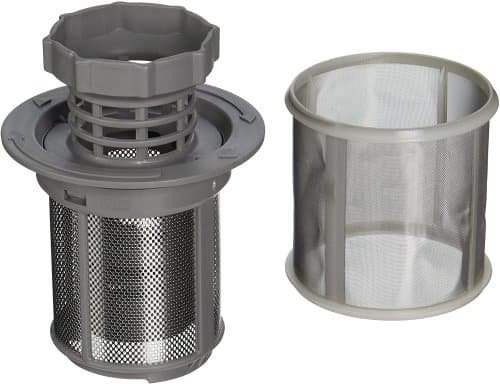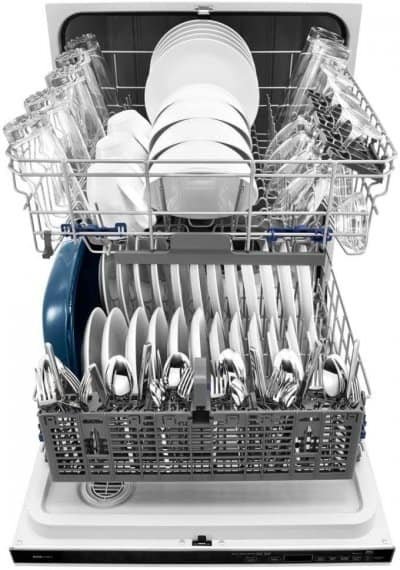Dishwashers are an essential appliance in many households, making the chore of dishwashing much more convenient. However, over time, mineral deposits and calcium buildup can accumulate in your dishwasher, affecting its performance and cleanliness. In this article, we will guide you through the process of effectively cleaning dishwasher calcium buildup, ensuring that your dishwasher operates at its best.
Table of Contents
Understanding Dishwasher Calcium Buildup
Dishwasher calcium buildup refers to the accumulation of mineral deposits, particularly calcium and lime, on various parts of the dishwasher. These deposits can form due to hard water, which contains a high concentration of minerals. Over time, the buildup can affect the performance of the dishwasher, leading to clogs, inefficient cleaning, and unpleasant odors.
Materials Required
Before we delve into the cleaning process, gather the following materials:
- Distilled white vinegar
- Baking soda
- Toothbrush or soft-bristle brush
- Microfiber cloth
- Small, pointed object (e.g., toothpick)
- Dish soap
- Gloves (optional)

Step 1: Safety Precautions
Before you begin cleaning, ensure your safety by taking the following precautions:
- Turn off the dishwasher and unplug it from the power source.
- Put on gloves to protect your hands from any chemicals or debris.
Step 2: Cleaning the Interior
Start by cleaning the interior of the dishwasher using the following steps:
- Remove any loose debris or food particles from the bottom of the dishwasher.
- Wipe the walls, racks, and door of the dishwasher with a microfiber cloth dampened with a mixture of water and dish soap.
- Inspect the dishwasher’s spray arms for any clogs or blockages.
Step 3: Cleaning the Spray Arms
The spray arms are responsible for distributing water during the wash cycle. Follow these steps to clean them effectively:

- Remove the spray arms from the dishwasher.
- Rinse them under warm water to remove any visible debris.
- Use a toothbrush or soft-bristle brush to scrub away any calcium buildup or clogs.
- Ensure the spray arm nozzles are clear and free from obstructions.
Step 4: Unclogging the Drain
A clogged drain can lead to drainage issues and unpleasant odors. Here’s how you can unclog it:
- Locate the dishwasher drain and remove any visible debris or buildup.
- Use a small, pointed object like a toothpick to clear any stubborn clogs in the drain.
- Flush the drain with distilled white vinegar to remove any remaining deposits.
Step 5: Cleaning the Filters
Filters in the dishwasher prevent food particles and debris from entering the drainage system. Clean them using the following steps:

- Remove the filters from the dishwasher.
- Rinse them under warm water to remove loose debris.
- Soak the filters in a mixture of warm water and distilled white vinegar for about 15 minutes.
- Scrub the filters gently with a toothbrush to remove any remaining buildup.
- Rinse the filters thoroughly and reinstall them in the dishwasher.
Step 6: Removing Stubborn Calcium Buildup
For stubborn calcium buildup, use a combination of baking soda and vinegar:
- Sprinkle baking soda on a damp cloth or sponge.
- Gently scrub the affected areas of the dishwasher.
- Create a paste by mixing baking soda with water and apply it to stubborn stains.
- Allow the paste to sit for 15-20 minutes before scrubbing.
- Rinse the dishwasher thoroughly with water.
Step 7: Cleaning the Exterior
Don’t forget to clean the exterior of your dishwasher to maintain its overall appearance:

- Wipe the exterior surfaces with a microfiber cloth dampened with water and dish soap.
- For stainless steel dishwashers, use a stainless steel cleaner to remove fingerprints and restore shine.
- Dry the exterior with a clean microfiber cloth to prevent water spots.
Step 8: Maintenance Tips
To prevent future calcium buildup and maintain a clean dishwasher, consider the following maintenance tips:
- Use a rinse aid to minimize mineral deposits.
- Regularly check and clean the dishwasher’s filter.
- Run a cleaning cycle with a dishwasher cleaner once every few months.
- Use a water softener if you have hard water in your area.

Can I use bleach to clean dishwasher calcium buildup?
It is not recommended to use bleach as it can damage the dishwasher’s components. Stick to vinegar and baking soda for safe and effective cleaning.
How often should I clean my dishwasher?
It is recommended to clean your dishwasher at least once a month to prevent excessive calcium buildup and maintain its performance.
Can I use citric acid instead of vinegar?
Yes, citric acid can be used as an alternative to vinegar. Mix it with water to create a cleaning solution and follow the same cleaning steps.
What if the calcium buildup persists even after cleaning?
If the calcium buildup persists, you may need to consider installing a water softener or contacting a professional appliance repair service for assistance.
Can I clean the dishwasher with the dishes inside?
It is best to clean the dishwasher when it is empty to ensure that all the surfaces are thoroughly cleaned and no debris or calcium buildup is missed.
How to clean dishwasher calcium buildup?
Calcium buildup in a dishwasher can be difficult to remove, but there are several methods you can use to clean it.
One way is to fill a bowl with white vinegar and place it in the top rack of your dishwasher. Run the dishwasher on a short cycle with hot water, and the vinegar should help dissolve any calcium deposits. You may need to repeat this process several times for tough buildup.
Another option is to use a commercial descaling product designed specifically for removing calcium buildup from dishwashers. Follow the instructions on the product label for best results.
Finally, if all else fails, you can try scrubbing away calcium deposits with an old toothbrush or other soft-bristled brush. Be sure to wear gloves and safety goggles while doing this, as some of the deposits may be sharp or contain harmful chemicals.
Conclusion
By following the step-by-step guide provided, you can effectively clean the calcium buildup in your dishwasher and ensure its optimal performance. Regular maintenance and cleaning will extend the lifespan of your dishwasher and enhance its efficiency, allowing you to enjoy spotlessly clean dishes every time.
In conclusion, maintaining a clean and calcium-free dishwasher is essential for optimal performance and longevity. By following the outlined steps and incorporating regular maintenance, you can ensure that your dishwasher operates efficiently and delivers sparkling clean dishes every time.


1 thought on “How to Clean Dishwasher Calcium Buildup: A Step-by-Step Guide”
Comments are closed.